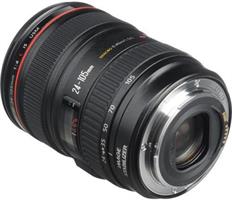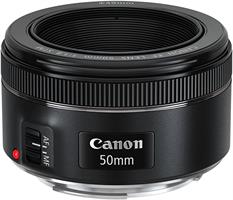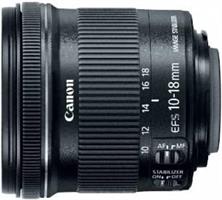When you buy through our links, we may earn a commission. Products or services may be offered by an affiliated entity. Learn more.
Are you an avid traveler with a passion for capturing breathtaking moments? If so, investing in the best travel lens for Canon offers can elevate your travel photography to new heights.
Discover the top Canon lenses for travel photography to suit different needs and budgets, learn about lens specifications, and understand the importance of image stabilization.
Let’s embark on this journey together to find the perfect lens for your next adventure!
Snapshot: Top 3 Canon Lenses for Your Next Journey
In travel photography, a dependable lens tailored to your individual needs and preferences is a must-have. Here’s a quick snapshot of the top 3 Canon lenses that excel in various aspects of travel photography, including the best Canon travel lens for each category, as well as some of the best Canon travel lenses available, and a mention of a popular canon travel lens:
-
Best Canon Lens Overall: Canon EF 24-105mm f/4.0 L IS USM: When discussing versatility and quality, this lens emerges as a top contender. It’s a great optic choice for both stills and video recording.
-
Best Budget Option: Canon 50mm f/1.8 STM
-
Best for Landscape Photography: Canon 10-18mm f/4.5-5.6 IS STM
Canon EF 24-105mm f/4.0 L IS USM - The Best All-Rounder

Price: $699.95
Check Latest Price for EF 24-105mm
Specifications:
-
Focal Length: 24-105mm
-
Maximum Aperture: f/4.0
-
Lens Mount: Canon EF
-
Image Stabilization: Yes
-
Weight: 1.48 lbs (23.68 ounces)
Pros:
-
Wide focal range
-
Excellent image quality
-
Image stabilization
-
Weather sealing
Cons:
-
Heavy
-
Pricey compared to other options
The Canon EF 24-105mm f/4.0 L IS USM is a superb all-around lens, suitable for various photography styles, from landscapes to portraits. With its wide focal range, you can effortlessly capture both wide-angle and telephoto shots without constantly swapping lenses.
The image stabilization feature allows for up to three stops of handholdability, meaning you can confidently shoot in low-light situations without a tripod.
One downside is the relatively heavy weight of the lens, which might be a concern for those who prefer traveling light. However, its weather sealing and solid build quality make it a reliable companion for outdoor use.
While the price tag might be steep for some, the versatility and performance of the Canon EF 24-105mm f/4.0 L IS USM make it well worth the investment for those seeking a high-quality, all-purpose lens for their travel photography endeavors.
Rating:
-
Image Quality: 4.5/5
-
Versatility: 4.5/5
-
Build Quality: 4/5
-
Value for Money: 3.5/5
Canon 50mm f/1.8 STM - The Best Budget Option

Price: $299.00
Check Latest Price for 50mm f/1.8
Specifications:
-
Focal Length: 50mm
-
Maximum Aperture: f/1.8
-
Lens Mount: Canon EF
-
Image Stabilization: No
-
Weight: 0.35 pounds (5.6 ounces)
Pros:
-
Affordable
-
Lightweight
-
Excellent image quality
-
Great low-light performance
Cons:
-
Fixed focal length
-
Plastic construction
If you’re on a budget, the Canon 50mm f/1.8 STM is the perfect option for travel photography. This affordable prime lens offers remarkable image quality, center sharpness, and low-light performance due to its bright f/1.8 aperture. Its compact size and lightweight design make it easy to carry around during your travels.
However, the fixed focal length means it’s not as versatile as a zoom lens, and the plastic construction may not be as durable as some of its pricier counterparts.
Despite these drawbacks, the Canon 50mm f/1.8 STM remains an excellent investment for budget-conscious travel photographers seeking a reliable and high-performing lens.
Rating:
-
Image Quality: 4/5
-
Versatility: 3/5
-
Build Quality: 3/5
-
Value for Money: 5/5
Canon 10-18mm f/4.5-5.6 IS STM - Best for Landscape Photography

Price: $299.00
Check Latest Price for 10-18mm f/4.5-5.6 IS
Specifications:
-
Focal Length: 10-18mm
-
Maximum Aperture: f/4.5-5.6
-
Lens Mount: Canon EF-S
-
Image Stabilization: Yes
-
Weight: 0.53 lbs (8.48 ounces)
Pros:
-
Wide-angle range
-
Image stabilization
-
Lightweight design
Cons:
-
Slower aperture range
-
Lack of weather sealing
For those who love capturing breathtaking landscapes during their travels, the Canon 10-18mm f/4.5-5.6 IS STM is an excellent choice.
This wide-angle lens offers a wide-angle range and image stabilization, making it perfect for taking stunning photos of vast landscapes and cityscapes. Its lightweight design ensures that it won’t weigh you down during your travels.
One downside is the slower aperture range, which may not perform as well in low-light situations as some other lenses. Additionally, the lack of weather sealing might be a concern for those who frequently shoot in harsh outdoor conditions.
Nonetheless, the Canon 10-18mm f/4.5-5.6 IS STM is a fantastic lens for landscape photography enthusiasts seeking a wide-angle option that won’t break the bank.
Rating:
-
Image Quality: 4/5
-
Versatility: 3.5/5
-
Build Quality: 3.5/5
-
Value for Money: 4/5
Understanding Lens Specifications – A Guide to Picking the Right Canon Lens
Understanding various lens specifications is key to choosing a lens that meets your travel photography needs. We will explore key aspects such as aperture, focal length, and lens weight and size.
The Role of Aperture in Photography
In photography, aperture significantly impacts image quality, depth of field, and low-light performance. A lens with a fast aperture, typically less than or around f/2.8, allows more light to enter the camera during a single exposure, making it advantageous for travel photography and low-light situations.
Utilizing a lens with a brighter aperture enables more light to enter the lens, resulting in enhanced image quality and improved low-light performance. Lenses with wider apertures, such as the Canon 50mm f/1.8 STM, are ideal for shooting in dimly lit environments, ensuring sharp and well-exposed images.
A clear comprehension of aperture’s role in photography is fundamental in selecting a lens that aligns with your needs and shooting conditions, guaranteeing consistently stunning photos.
Focal Length and Image Composition
Another significant aspect of camera lens specifications is the lens focal length, which dictates the field of view and the amount of a scene that can fit within the frame. A wide-angle lens, such as the Canon 10-18mm f/4.5-5.6 IS STM, offers a broader field of view, perfect for capturing landscapes, cityscapes, and large interior spaces with various focal lengths. Wide angle lenses provide versatility and creative options for photographers in different situations.
On the other hand, telephoto lenses provide a narrower field of view and are ideal for capturing distant subjects, such as wildlife or sports events. Prime lenses, like the Canon 50mm f/1.8 STM, have a fixed focal length, whereas zoom lenses offer a variable focal length, allowing you to adjust the composition without physically moving closer or further away from the subject.
Understanding the focal length that aligns with your photography style and favorite subjects can guide you in picking the ideal lens for your travel photography requirements.
Considering Lens Weight and Size
Considering the lens’s size and weight is vital in choosing a travel lens, as larger lenses occupy more space in your camera bag and might be burdensome to carry over long periods. For example, while the Canon EF 24-105mm f/4.0 L IS USM boasts a versatile focal range, it is heavier than the lightweight Canon 50mm f/1.8 STM, which may be more suitable for those who prefer traveling light.
Factoring in lens weight and size can lead to a more enjoyable and comfortable travel photography experience, freeing you to concentrate on capturing beautiful moments without the burden of hefty equipment.
Decoding Lens Mount Types - EF vs EF-S
Differentiating between Canon EF and EF-S lens mounts and understanding their compatibility with your camera is fundamental when choosing a Canon lens. EF lenses can be used with both full-frame and crop sensor cameras. On the other hand, EF-S lenses are specifically designed for APS-C or crop sensor cameras..
Using a full-frame lens on a crop sensor camera may not fully utilize the lens’s optical capability and can be heavier and more expensive than EF-S lenses. On the other hand, EF-S lenses, like the Canon 10-18mm f/4.5-5.6 IS STM, are designed to cater to the needs of crop sensor cameras, providing excellent image quality and a lighter, more compact design.
Choosing a lens with a mount type suitable for your camera is vital to ensure compatibility and to fully leverage the potential of your photography equipment.
Understanding Image Stabilization in Lenses
Some lenses offer an image stabilization feature that counteracts camera shake from hand-held shooting, significantly reducing blur in your photos. This feature is particularly advantageous for travel photography, where handheld shooting is common, and carrying a tripod may not always be practical.
Lenses with image stabilization, like the Canon EF 24-105mm f/4.0 L IS USM and Canon 10-18mm f/4.5-5.6 IS STM, allow you to confidently shoot in low-light situations without worrying about camera shake affecting the sharpness of your images.
Grasping the advantages of image stabilization aids in making a well-informed decision when picking a travel lens, leading to steady and blur-free photos throughout your trip.
Summary
In conclusion, finding the perfect Canon travel lens depends on your photography style, budget, and preferences. By understanding lens specifications, such as aperture, focal length, lens weight and size, and mount types, you can make an informed decision and elevate your travel photography experience.
Whether you choose the versatile Canon EF 24-105mm f/4.0 L IS USM, the budget-friendly Canon 50mm f/1.8 STM, or the landscape-focused Canon 10-18mm f/4.5-5.6 IS STM, having the right lens will undoubtedly enhance your travel photography adventures.
Frequently Asked Questions
Which lens is best for travel photography?
For the best results in travel photography, the Canon EF 24-105mm f4 and the Sony FE 35mm F1 offer a great combination of versatility and quality. Tamron's 11-20mm F2 and Fujifilm XF 23mm f/1.4 R are also excellent options for a variety of shooting scenarios.
What is the best Canon lens for travel vlogging?
For travel vlogging, the Canon EF-M 22mm f/2 STM lens is a great choice, offering excellent image quality, along with a wide aperture and a versatile focal length. Additionally, the Rokinon 20mm f/1.8 ED AS UM and Sigma 18-35mm F/1.8 DC HSM ART lens also provide great options for those looking to capture high-quality footage on their travels.
What are the three lenses for travel photography?
The three lenses essential for travel photography include an ultra-wide-angle zoom lens, a workhorse lens and a telephoto lens.
What is the difference between Canon EF and EF-S lenses?
Canon EF lenses are compatible with both full-frame and crop sensor cameras, while EF-S lenses are designed specifically for APS-C or crop sensor cameras, making them incompatible with full-frame models.
How does image stabilization benefit travel photography?
Image stabilization ensures sharp, steady photos even in low lighting conditions, allowing for handheld shooting and making travel photography much easier and more successful.